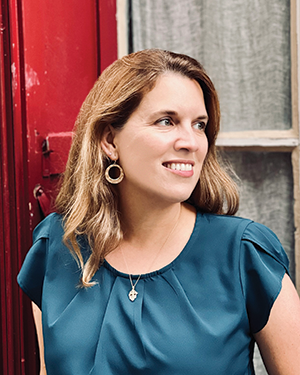 Annie St. Romain Gauthier, CFO, Co-CEO, St. Romain Oil Company LLC & Y-Not Stop
Annie St. Romain Gauthier, CFO, Co-CEO, St. Romain Oil Company LLC & Y-Not Stop
Q: What are the musts for any successful foodservice program?
“I’ve often thought over the past several years that foodservice is like a race. Lots of competitors are vying to win. Some seem to think it’s a sprint and burn out. I believe that done well, it’s a long-form relay race that requires the staying power of a marathon. For a successful foodservice program, you must know your market and your capabilities and be prepared to measure, monitor and move on.
Each market presents unique opportunities, and what works for one retailer will not work for all. Focus on what you’re passionate about that’s lacking in your market and can sell. Know your team’s capabilities—what experience do y’all have, how much space do you have, how willing are you to invest the money and time it takes to build a strong foodservice program? One person alone cannot make a foodservice program; it requires a foodservice culture that involves your whole team and considers their abilities and needs as well.
You must track your item data, analyze it and act on what you learn to use yesterday’s lessons to make tomorrow better. We’ve been tracking purchases, sales, waste and shrink at item level for almost 15 years. I can’t imagine running a successful foodservice business without knowing what’s driving sales and costs. Many retailers, especially those who’ve been in the industry for years, struggle with a tendency to control their foodservice programs to death. Literally. A thriving foodservice program will require an investment in fresh food—and that will show up as wasted food. If you don’t produce enough, you can never optimize your sales. That said, overproducing needlessly is costly. Be bold but not foolish.
We were talking to a new restaurant operator the other day who was blown away by the level of tracking we do. Unfortunately, despite his great food and fabulous personality, he’s headed for closing the doors because he’s not measuring his profitability. I hope he can get it together, but it’s a story we’ve seen repeated over the years. To stay the course, you must pace yourself.
Invest in tracking. Learn what works. Be patient. Give new products time— months not weeks, but not years either. Be willing to prune what’s not working. Sometimes great ideas are not right for a given store at a given time. We launched a fruit cup program at a rural store in 2009, and it was rotten timing—literally. We’ve since launched the same program a decade later in a metro market with great results. We rolled it out to all our other stores, including the original store from 2009, and it’s thriving.
We’ve launched great products that customers asked for but then didn’t buy. We’ve brought in limited time offers and seen them take off and become permanent. We’ve grown sales—and streamlined operations for our team members—even while moving away from all-day breakfast and dropping pizza entirely from our menus.
Listen to your customers—it doesn’t matter how great a product seems— what matters is how customers vote at the register. Pilot items and then roll them out across your stores. Focus on building a reputation for your core items, and bring in simple LTOs to keep it interesting. Don’t reinvent the wheel; it’s a marathon of executing with boring consistency, not a sprint from one great new idea to the next. And while we never reach the finish line, we’re certainly stronger for running the race.